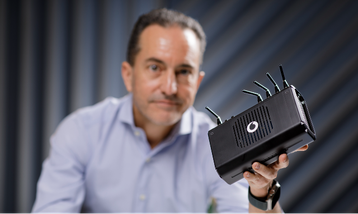Some of Europe's biggest telecom operators have paired together to accelerate progress around Open RAN, through a new report that lists the priorities for the technology this year.
In the report, Deutsche Telekom, Orange, Telecom Italia (TIM), Telefónica, and Vodafone highlighted their collective Open RAN progress so far.
The report, which is titled ‘Open RAN MoU Progress Update on Maturity, Security and Energy Efficiency,' also addresses questions and challenges posed by the technology.
All five telcos signed a Memorandum of Understanding (MoU) in early 2021 to commit to working with all industry players to ensure that Open RAN technology is the technology of choice for future mobile networks.
Vodafone, in particular, has been making progress with its Open RAN deployments. The operator unveiled its latest innovation with its prototype Open RAN-compliant 5G network-in-a-box product last week. In December, Vodafone also outlined plans to install the technology on 16 mobile masts in Devon, UK.
More specifically, the report delves into three key areas; maturity, security, and energy efficiency.
It notes that the technology gap between traditional RAN (radio access network) and Open RAN is closing, with several Open RAN deployments taking place in the UK and North America recently, helped by government support.
This can be further reinforced by the US, Canada, and Australia backing the UK government's Open RAN vision last year, while the US government set out plans to invest $1.5 billion to support rural carriers in replacing Huawei equipment and driving Open RAN adoption.
There will be a key focus this year around the maturity of 5G for urban areas.
Open-RAN notes security and energy efficiency progress
Security is also a key focus, with all five telcos cooperating with the relevant national authorities to share information on the security, implementation, and management of Open RAN.
The telcos have requested to formally include Open RAN as part of the GSMA security assurance scheme (NESAS) and the EU’s 5G certification scheme defined by ENISA, ahead of next week's GSMA Mobile World Congress event.
All five operators have been applying mandatory controls defined by the O-RAN Alliance, plus 3GPP security specifications. As well as this, the telcos have been following a 'zero trust' approach to every vendor, to ensure the established standards and regulations are followed.
Thirdly, the telcos are seeking to increase the energy efficiency of all the Open RAN components, with a particular focus to be applied to radio transmitters and cloud infrastructure.
According to the report, energy efficiency within Open RAN radio units is similar to that of traditional RAN, and will improve with dynamic sleep mode, which works based on actual traffic needs.
The report also reveals progress around the energy efficiency of cloud infrastructure, which operators say is mainly down to advancements in CPU and ‘accelerator’ (special silicon chip) technologies, plus cooling systems for servers.
A proposed general framework for energy monitoring of all appropriate parts of the Open RAN system, including real-time reporting, tools, and methodologies to achieve greater automation, has been put forward by the operators.
Further Open RAN deployments pilots are planned for this year, ahead of full-scale deployments across Europe in 2025.


